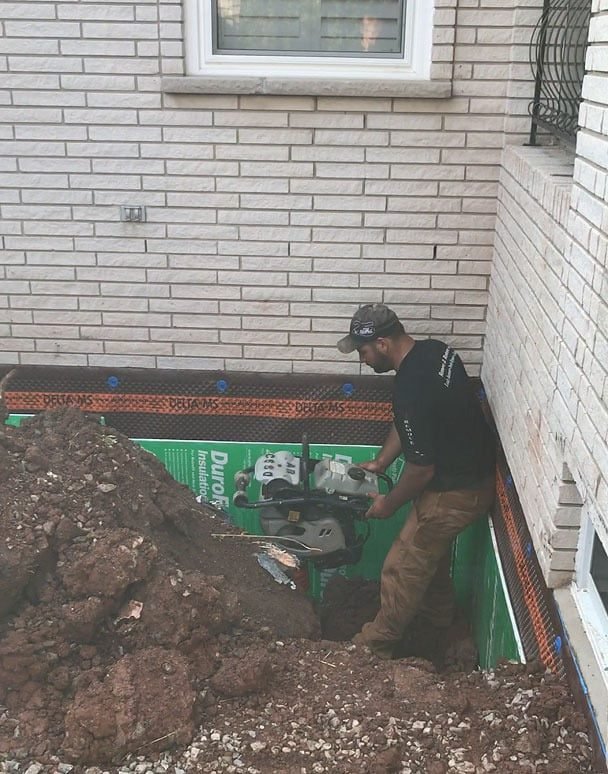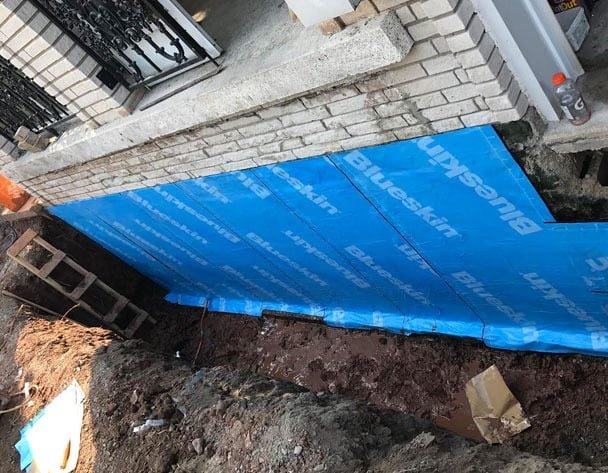Living in New York City means dealing with unpredictable weather and potential flooding. For homeowners, a wet basement is more than just a nuisance; it can lead to structural damage, mold growth, and a myriad of health issues. This guide will help you understand the importance of basement waterproofing and how to choose the best basement waterproofing materials to protect your home.
Understanding Basement Waterproofing Materials
Common Waterproofing Materials in NYC
Basement waterproofing involves using various materials to prevent water from penetrating your basement walls and floor. Some commonly used materials in NYC include:
Sealants: These are liquid or paste-like materials applied directly to basement walls and floors. They create a water-resistant barrier by filling in cracks and pores.
Types:
- Cementitious: Made from Portland cement and offers good adhesion to concrete surfaces.
- Asphalt-based: Flexible and effective against moisture but may have a strong odor.
- Acrylic: Easy to apply and water-based, but may not be suitable for high hydrostatic pressure (pressure from standing water).
Applications: Sealants are best for minor leaks or as a secondary waterproofing layer in conjunction with other methods.
Membranes: These are thin sheets of waterproof material applied to the exterior of basement walls. They act as a barrier that prevents water from entering the foundation.
Types:
- Bituminous: Made from asphalt and offers excellent waterproofing but requires professional installation.
- Polymeric: Comes in various forms like sheet membranes and liquid-applied coatings. They are flexible, durable, and often easier to install than bituminous membranes.
- Drainage Matting: A type of membrane with dimples or channels that allows water to flow down the wall toward a drainage system.
Applications: Membranes are a robust solution for severe water problems and new construction projects.
Drainage Systems: These systems collect and channel water away from the foundation. They are typically installed around the perimeter of the basement floor.
Components:
- French Drain: A perforated pipe embedded in gravel around the foundation that collects water.
- Sump Pump: A pump located in a sump pit (a low point in the basement floor) that collects water from the drain and pumps it away from the house.
Applications: Drainage systems are highly effective for managing large volumes of water and are often used in combination with other waterproofing methods.

Advantages and Limitations of Each Material
Each material has its pros and cons:
- Sealants are easy to apply and relatively inexpensive, but they may not be effective for severe water issues.
- Membranes offer robust protection but require professional installation and can be costly.
- Drainage Systems effectively manage water flow but involve significant excavation and installation work.
Choosing the Right Waterproofing Material for Your NYC Basement
Factors to Consider
When selecting waterproofing materials, consider:
- Basement Type – Is your basement finished or unfinished? Different materials are suited to different types of basements.
- Local Climate – NYC’s weather can be harsh, so choose materials that can withstand heavy rain and potential flooding.
- Budget – Waterproofing can be expensive, so balance your need for protection with your financial constraints.
Estimated Costs of Waterproofing Methods (NYC)
| Material | Cost Range |
| Sealants | $2 – $5 per square foot |
| Membranes | $5 – $15 per square foot (including professional installation) |
| Drainage Systems | $3,000 – $10,000+ (depending on complexity) |
Case Studies and Expert Opinions
Experts in basement waterproofing often recommend a combination of materials for the best results. For example, a homeowner in Brooklyn used a combination of sealants and a drainage system and reported no water issues even during heavy rain. Consulting with professionals like Brick Tech Contracting Corp can provide valuable insights tailored to your specific needs.
The Installation Process
Steps Involved in Installing Different Materials
The installation process varies depending on the material:
- Sealants can be DIY projects. Clean the walls, apply the sealant, and allow it to dry.
- Membranes require excavation around the foundation, applying the membrane, and backfilling the area.
- Drainage Systems involve digging trenches, installing pipes, and connecting them to a sump pump.
Importance of Professional Installation
While some materials can be installed by homeowners, others, like membranes and drainage systems, require professional expertise. Improper installation can lead to failures and additional costs down the road.
Maintenance and Long-Term Value
Tips for Maintaining Waterproofing Materials
Regular maintenance ensures the longevity of your waterproofing efforts:
- Inspect Sealants – Check for cracks or peeling and reapply as needed.
- Clean Drainage Systems – Ensure pipes and sump pumps are free of debris.
- Inspect Membranes – Look for signs of wear and tear and address them promptly.

How Proper Maintenance Enhances the Lifespan of Your Basement
By maintaining your waterproofing materials, you can prevent water damage, mold growth, and structural issues, ultimately enhancing the lifespan and value of your home.
For existing leaks: If your basement is already experiencing water problems, a professional assessment is crucial to identify the source of the leak and recommend the most appropriate repair strategy. This might involve crack repair, interior waterproofing systems, or a combination of approaches.
Conclusion
Choosing the right materials and maintaining a waterproof basement is crucial for NYC homeowners. This guide has provided you with the knowledge to make informed decisions about basement waterproofing.
Looking for professional advice or services? Contact Brick Tech Contracting Corp, your local experts in waterproofing services in NYC.








